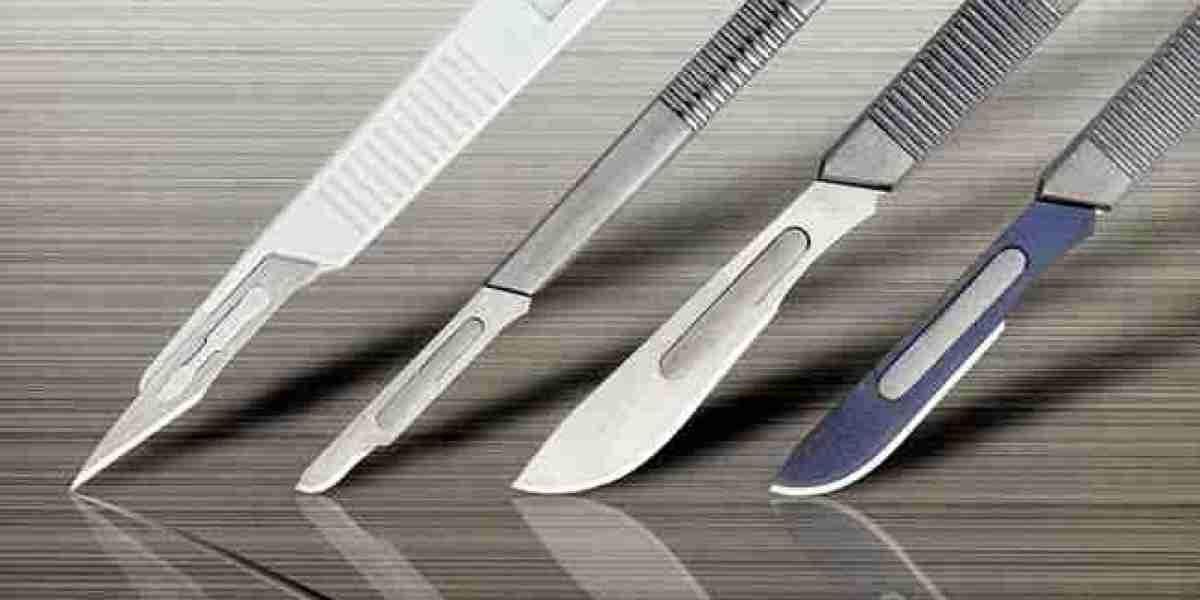Introduction
High-volume surgical facilities, including specialized eye hospitals and ambulatory surgical centers, are pivotal in driving the demand and adoption of ophthalmic knives. These centers perform a large number of eye surgeries daily, ranging from cataract removal to refractive and glaucoma surgeries. Efficient and precise surgical instruments such as ophthalmic knives are critical for successful outcomes and patient safety. This article delves into how high-volume surgical facilities influence the ophthalmic knives market, the factors driving adoption, and the impact on product development and healthcare delivery.
1. Role of High-Volume Surgical Facilities in Ophthalmology
High-volume facilities specialize in performing a high number of eye surgeries, often leveraging streamlined processes to increase patient throughput without compromising quality. These facilities include:
Dedicated eye hospitals and clinics
Ambulatory Surgical Centers (ASCs)
Multi-specialty hospitals with ophthalmology departments
Due to the sheer volume of surgeries, these centers place considerable emphasis on surgical efficiency, cost-effectiveness, and quality of instruments, making them key customers for ophthalmic knives.
2. Drivers of Ophthalmic Knives Adoption in High-Volume Facilities
Surgical Precision: Ophthalmic knives must deliver ultra-sharp, precise incisions to minimize tissue trauma and speed up recovery, crucial for centers handling many surgeries daily.
Durability and Reliability: Instruments must withstand repeated use or be available as disposable versions to maintain sterility and performance.
Cost Efficiency: Facilities seek instruments that balance cost and quality, especially for reusable knives requiring effective sterilization protocols.
Standardization: High-volume centers often standardize on specific brands or types of ophthalmic knives to simplify training and inventory management.
Compatibility with Advanced Techniques: Adoption of minimally invasive and robotic-assisted surgeries increases demand for specialized knives compatible with these procedures.
3. Impact on Product Innovation and Design
High-volume centers influence manufacturers to develop ophthalmic knives with features tailored for repetitive, fast-paced surgical environments:
Ergonomic Designs: To reduce surgeon fatigue and improve control during long shifts.
Disposable Knives: Growing preference to avoid cross-contamination and reduce sterilization turnaround time.
Enhanced Blade Materials: Use of materials that maintain sharpness longer, even with frequent use.
Integrated Features: Some knives now include coatings or micro-textures for smoother incisions and reduced healing time.
4. Market Trends Driven by High-Volume Surgical Facilities
Shift to Ambulatory Surgical Centers: ASCs are increasingly preferred due to lower costs and faster patient turnover, driving demand for cost-effective ophthalmic knives.
Increasing Adoption of Single-Use Knives: To maintain sterility and reduce infection risks in high-patient-volume settings.
Focus on Supply Chain Efficiency: High-volume centers require reliable and timely supply of surgical instruments, prompting manufacturers to optimize logistics and inventory management.
5. Regional Insights
North America and Europe: Well-established high-volume facilities prioritize quality and innovation, leading to demand for premium ophthalmic knives.
Asia-Pacific: Rapid expansion of high-volume eye surgery centers, especially in urban areas, creates vast opportunities for both premium and affordable knife products.
Emerging Markets: Growth of private eye care centers focused on volume and affordability influences the adoption patterns of ophthalmic knives.
6. Challenges Faced by High-Volume Facilities
Infection Control: Ensuring adequate sterilization with reusable knives or managing costs with disposables.
Training and Expertise: Standardizing the use of ophthalmic knives to reduce surgical errors.
Inventory Management: Balancing stock levels to avoid shortages or wastage.
Regulatory Compliance: Meeting safety and quality standards under increasing regulatory scrutiny.
7. Future Outlook
Continued growth of high-volume surgical facilities will sustain demand for advanced, efficient ophthalmic knives.
Manufacturers will innovate to develop knives specifically designed for fast-paced, high-throughput environments.
Integration with digital surgical systems and robotic platforms will expand.
Emerging markets will see increased adoption driven by expanding healthcare infrastructure.
Conclusion
High-volume surgical facilities play a crucial role in shaping the ophthalmic knives market. Their unique operational needs push manufacturers toward innovation in design, cost-efficiency, and quality assurance. As these centers continue to grow globally, especially in emerging regions, the demand for specialized ophthalmic knives will rise. Aligning product offerings with the specific needs of high-volume surgical settings will be key for market players aiming to capitalize on this expanding segment.




